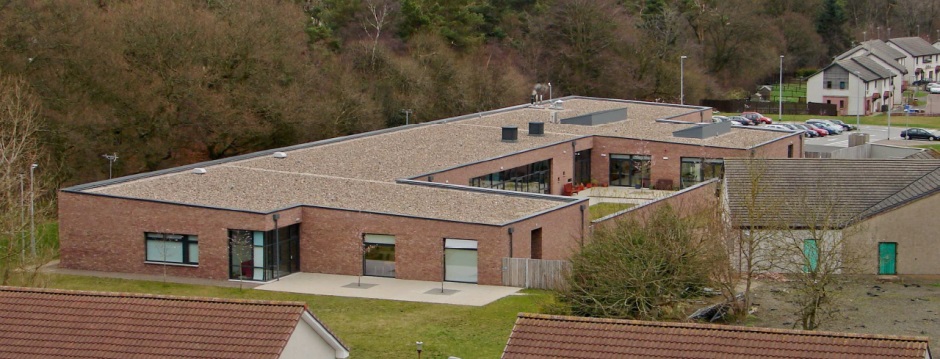Craigshill Learning Disabilities Centre
Name of project: Craigshill Learning Disabilities Centre
Location: Craigshill, Livingston
System: TPE single ply
Product: Spectraplan SG120 dark and light grey membrane
Size: 1500m2
Spectraplan has been used to provide a bio-diverse ‘brown roof’ on the Craigshill Learning Disabilities Centre in Scotland. The 1,550m2 purpose built learning disability centre has replaced two existing facilities at Linlithgow and Blackburn.
The design was closely developed with all user groups and the local authorities. It reflects a positive and inclusive vision of disability incorporating the most up-to-date guidelines for people with severe learning disabilities, challenging behaviours and sensory impairments. The energy efficient development includes an arts and crafts room, a music room, an IT suite, a sensory garden and the bio-diverse roof.
Chartered Architects, MacMon chose a biodiverse system for the Craigshill Learning Disabilities Centre due to its suitability. The system makes use of recycled materials e.g. crushed brick, crushed concrete etc. in the growing medium. It is intended to create a natural wasteland which can be seeded initially with selected species to encourage growth. The basic design is to attract indigenous fauna and flora of all kinds and provide a habitat capable of supporting wildlife as well as enhancing the appearance.
Before installing the bio-diverse roofing system, Spectraplan TPE SG120 Dark Grey single ply waterproofing membrane was installed over a vapour control layer and insulation. Spectraplan TPE membranes are free of halogens (Chlorine, Fluorine, Bromine and Iodine), softeners, (H)CFCs and heavy metals. All polymeric materials are resistant to weathering, chemical oxidation and UV radiation which ensures long term durability, a key factor in environmental sustainability.
Spectraplan is only available in the UK from SIG Design & Technology and can only be installed by an IKO Single Ply trained and licensed contractor.












